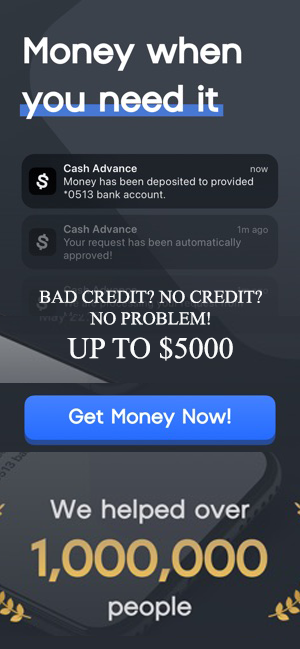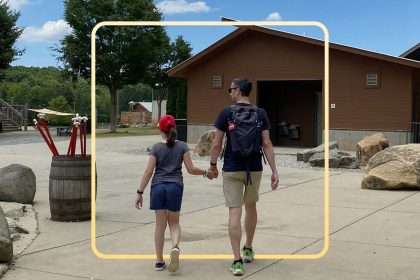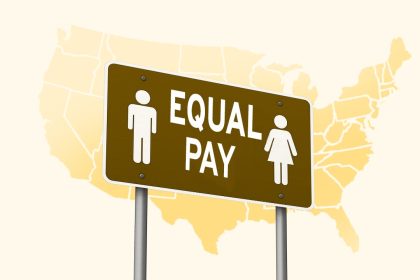Key takeaways
- Not paying student loans could lead to late fees, a damaged credit score and wage garnishment.
- If you have federal loans, you may qualify for a repayment plan to help bring your loans current and get rid of the debt sooner.
- Student loan debt can only be discharged in bankruptcy if you can prove it is causing an undue hardship.
- Speak to your lender about affordable repayment alternatives if you struggle to keep up.
You can face dire financial consequences for failing to pay your student loans. It starts with a major hit to your credit score, but it doesn’t end there.
“The government has greater collection power than your typical lender,” warns Persis Yu, Deputy Executive Director and Managing Council at the Student Borrower Protection Center. “[Not paying] will have a lot of costs.”
If you have federal loans, your income, tax refunds or social security could be withheld by the federal government. Private lenders have ways of getting their money as well, including selling the debt to a collection agency that could sue you in court.
If you’re experiencing financial difficulty and approaching student loan default, it’s worth reaching out to your lender to explore forms of relief that may be available to you.
What happens if you don’t pay student loans?
Whether it’s your student loan payments or any other debts, if you don’t make your monthly payments, your finances could take hits from multiple angles.
What happens if your student loans are delinquent?
Loans are considered delinquent immediately after one missed payment, but your lender or loan servicer might not report you as late to the major credit bureaus until you’re 90 days past due. You might face the following consequences if you miss a few payments:
- Credit score drop. According to the Federal Reserve Bank of New York’s Liberty Street Economics, a new student loan delinquency can drop your credit score by more than 150 points.
- Late fees. A late payment — one you eventually make but not by the due date — could result in a late payment fee. This amount varies by lender, and not all of them charge one, but it’s very common to see either flat late fees or fees that represent a percentage of your missed payment.
What happens if your student loans are in default?
After several months of missed payment — or once the account is 270 days delinquent — your student loan will enter default. The specific timing and consequences of default vary by lender. Potential consequences include:
- Federal student loans become due immediately. Due to a process called acceleration, the entire outstanding balance for your student loan will become due once you hit default.
- Lost eligibility for future aid. If you’re currently in default, you could lose out on any future student aid, including scholarships, grants and federal student loans. Defaulted loans on your credit report could also make it harder to purchase a home, buy a car or take out a credit card.
- Potential lawsuits. Your original lender could sell your loan to a debt collection agency, which can call and send you letters in an attempt to collect a debt, even after the statute of limitations expires.
- Withheld tax refunds and benefits. The government could withhold your refunds or a portion of your social security benefits and apply the money to your student loan debt until you’re current on payments.
- Wage garnishment. The government may garnish your wages and apply them to your outstanding balance — sometimes up to as much as 25 percent of your disposable income. It can do this until your loans are in good standing.
What happens if you never pay your student loans?
While some private lenders may end up writing off the debt or face a statute of limitations, it may be a while until that happens, and it can affect your credit for years. For federal loan borrowers, they can see garnished wages, benefits and tax refunds for the rest of their lives. Even senior student loan borrowers aren’t protected from garnishment, with social security benefit withholding pushing some into poverty.
“There is no statute of limitations on Federal student loans,” Yu says. “Essentially, the Federal Government can track you down forever, for the rest of your life, in order to collect on these loans.”
Without a statute of limitations and with the ability to garnish wages, benefits and tax refunds, Yu says the government has the ability to “wait borrowers out and take [what’s owed], often without a lot of notice about these payments being seized, especially tax refunds.”
While federal student loans are discharged after the borrower passes, that may not be the case for private student loans — especially cosigned ones. Make sure you read the terms of your loans to understand how they may be discharged.
Strategies for dealing with student loans before default
“For now, borrowers have the ability, up until the moment they’re 270 days past due, to get back on track,” says Yu.
If you’re struggling to repay your student loans, different repayment and forgiveness plans can help you keep your loans current without breaking the bank. Consider all of your options before choosing the best plan for your needs.
Income-driven repayment plan
If you’re struggling to repay your student loans, you can enroll your federal loans into an income-driven repayment (IDR) plan. Currently, a few different repayment options exist, so pick the one that meets your needs the best.
With each plan, you’ll make monthly payments based on your discretionary income and family size. You’ll need to update your information every year, so your payments accurately reflect your financial situation.
Apply for deferment or forbearance
Student loan forbearance or deferment allows you to temporarily pause your monthly payments without falling into delinquency or default, but you must qualify for it. If you’re in forbearance, interest will continue to accrue during that time.
While in deferment, interest will not accrue if you have subsidized loans. Federal student loans offer both deferment and forbearance, but many private loans do not typically offer one or both.
Apply for loan forgiveness
There are a few different student loan forgiveness programs that may cancel your student loan debt if you meet certain eligibility requirements, like being totally and permanently disabled, having been mislead by a school that engaged in illegal practices or having worked in the public service sector. There may be additional requirements. For example, for Public Service Loan Forgiveness, you must make 120 qualifying payments on an income-driven repayment plan.
Debt snowball or debt avalanche
Debt elimination plans, like the debt snowball or debt avalanche, might help you chip away at your student loan debt faster.
- For the snowball method, apply every spare dollar toward the debt with the lowest balance first, then move to the next lowest balance once the first is paid off.
- For the debt avalanche method, put every spare dollar toward the debt with the highest interest rate, then move to the debt with the next highest rate.
Refinancing
If you have high interest rates or many different private loans, you might want to consider refinancing your student loans. This allows you to consolidate your student loans into one loan with one rate and monthly payment. Additionally, the refinanced student loan rate may be lower than your current loans, saving you money.
You can only refinance your loans with private lenders, so proceed cautiously. Refinancing federal loans means you’ll lose certain benefits, like forbearance, forgiveness or the option to enroll in an income-driven repayment plan.
Strategies for getting out of student loan default
According to Yu, there are two primary ways a borrower can get out of student loan default: loan consolidation or loan rehabilitation.
Student loan consolidation
Loan consolidation requires you to consolidate your federal loans into a new direct loan and repay the new loan. You must agree to use an income-driven repayment plan. You can apply for consolidation through the Federal Student Aid website.
Student loan rehabilitation
Loan rehabilitation requires that you make nine consecutive payments in an amount that is negotiated with the Education Department, according to Yu. Once you do that, you can get transferred to a servicer, where you may be eligible for income-driven repayment.
“One of the downsides of the program is that, because of its duration, a lot of folks never actually transition into income-driven payment,” Yu says. “And so it has a higher re-default rate…[These programs] rely on borrowers being able to kind of stay on top of things afterwards.”
Once your loans are rehabilitated or consolidated, it’s imperative to create a budget and restrict extra spending to be able to meet your financial obligations. If you find yourself struggling again, reach out to your servicer as soon as possible.
Department appeal
“For some people, you really just have to kind of mitigate the damage at this moment,” Yu says. For those unable to get out of default, she suggests appealing to the department for hardship.
“That’s a way that you can at least temporarily stop any wage garnishment or offset from occurring. It’s not a long-term solution. But for people who just, in this moment, need this thing to stop because they need to feed their families and pay their rent, that is something that is available.”
You can make an appeal by submitting a “request for review” form or submitting a written statement to the Department of Education Default Resolution Group within 65 days of the date listed on your notice of intent to offset.
Student loan settlement
Student loan settlement happens when you settle your student loans for less than what you owe. This option might benefit you if you’re far behind on your student loans and your credit score has already suffered, since it can negatively impact your score.
You’ll need to be in default and pay a lump-sum amount to pay off the outstanding settled balance. Lenders aren’t required to settle, yet some may be willing to consider settling for less if it helps them collect a significant portion of your unpaid debt. This is not often recommended for several reasons, as you’ll need a large amount of money to pay the debt and the government may tax the forgiven amount.
Can you discharge student loans in bankruptcy?
The U.S. Bankruptcy Code allows student loans to be discharged if borrowers demonstrate that not doing so will be an “undue hardship.” However, proving an undue hardship is difficult. Borrowers must meet the three guidelines of undue hardship, which is called the Brunner test:
- You can prove that if forced to repay the loan, you could not maintain a minimal standard of living.
- You demonstrate that the hardship will continue for much of your loan repayment period.
- You made good-faith efforts to repay the loan before you filed for bankruptcy.
However, you should realize that it will be an uphill battle to prove that repaying your student loans will impose an undue hardship on you.
Bottom line
Not paying back your student loans can cause catastrophic results for your finances, your credit and your future borrowing prospects, so do your best to stay current on your loans.
If you’re struggling, you aren’t alone. A 2024 Bankrate pre-election survey found that 29 percent of Americans consider student loan debt a national crisis. Not paying back your student loans will hurt you for years to come, so the best course of action should be the program that gets you back on track.
Frequently asked questions
Why we ask for feedback
Your feedback helps us improve our content and services. It takes less than a minute to
complete.
Your responses are anonymous and will only be used for improving our website.
Help us improve our content
Read the full article here
















